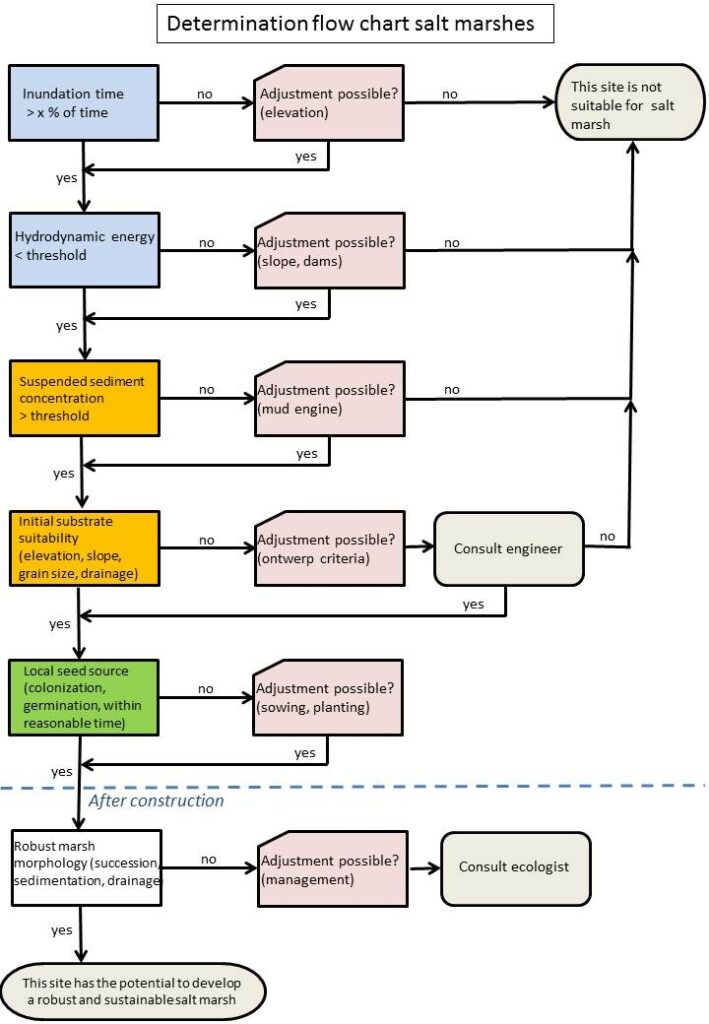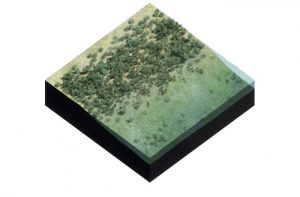How to Use
General
When salt marshes (or comparable ecosystem engineering solutions with for example mangroves or shellfish banks) are considered to be included in a design for coastal protection or coastal rehabilitation, several questions need answering:
- Is it possible to create a suitable habitat for this specific ecosystem in the project area?
- What would be the envisaged services provided by this ecosystem?
- To what extent can the ecosystem contribute to the primary function of the design and how does this affect the design itself? For example, what dimensions of a salt marsh are needed to reduce erosion, stabilize sediment or dissipate wave energy?
- What effects do the ecosystem engineers in this ecosystem have on the existing physical, ecological and socio-economical system?
- What are the costs, uncertainties and risks ensuing from including these ecosystem engineers in the design?
Here, we focus on the first question, the other questions can be elaborated in subsequent or parallel steps.
Determination flow chart
To determine the suitability of the project area for salt marshes it should be checked whether the habitat requirements are present or can be created. The determination flowchart gives a first answer to the suitability of the project area as a habitat for salt marshes. At the end of the flow chart we assume establishment of pioneer vegetation (Spartina anglica and/or Salicornia spp.) with the proper environmental conditions for a sustainable marsh to develop. For information on the thresholds, see the text on salt marsh habitat requirements above.


